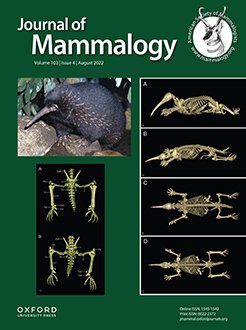The Natal long-fingered bat, Miniopterus natalensis, is an insectivorous, regional migrating species that exhibits sex-specific migration patterns. We explored the variability of isotopic niches using δ13C and δ15N ratios in fur from female and male bats in different reproductive states: pregnant, reproductive (but not pregnant at the time of this study), and nonreproductive females; nonscrotal and scrotal males using Bayesian standard ellipse areas and generalized linear models. Reproductive status was an informative predictor for the observed variation of both δ13C and δ15N ratios. Pregnant females displayed the highest mean δ13C and δ15N ratios and were distinct from other reproductive states. Reproductive females exhibited significantly higher δ15N ratios than nonreproductive females or nonscrotal and scrotal males, which may reflect state-dependent foraging and/or higher metabolic stress. Scrotal males displayed the lowest mean δ13C and δ15N ratios. Nonscrotal males exhibited the broadest isotopic niche, whereas reproductive females had the narrowest isotopic niche. Differences in isotopic niche sizes between the different reproductive groups may relate to variable individual feeding behavior and/or geographically different foraging areas/migratory stopover sites at individual and intraspecific levels in M. natalensis. This suggests that group-living, cave-dwelling bats may employ individual foraging specialization to facilitate coexistence in the broader geographic landscape.
How to translate text using browser tools
2 June 2022
Reproductive status affects isotopic niches of Miniopterus natalensis in northeastern South Africa
Mariëtte Pretorius,
Hugh Broders,
Grant Hall,
Mark Keith
ACCESS THE FULL ARTICLE

Journal of Mammalogy
Vol. 103 • No. 4
September 2022
Vol. 103 • No. 4
September 2022
dietary niche
isotope
migration
Miniopterus
reproduction




